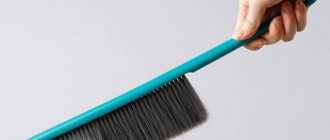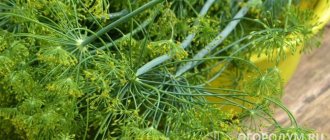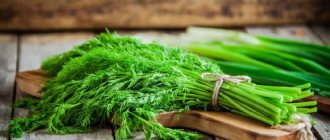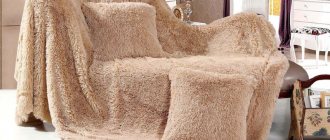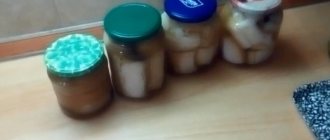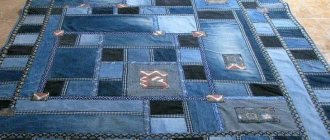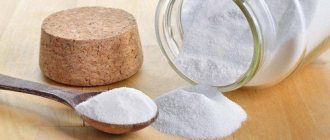A soft, warm blanket is associated with comfort, coziness and silence. It’s so nice on a cold winter evening, sitting comfortably in a rocking chair and covered with a fluffy blanket, reading an interesting book or watching your favorite movie. However, any textile becomes dirty over time, and then the housewife has a question: how to wash a blanket correctly? How you clean this bulky product depends on the material it is made from.
Which product can be washed?
Cleaning any textile begins with reading the manufacturer's care information on the label. Not so long ago, the word “plaid” meant a thick blanket made of wool, cashmere or alpaca, knitted by hand, which could only be washed by hand. Today on sale you can find similar products made from cotton and linen, fleece and polyester, microfiber and bamboo. All of them are industrially manufactured using the latest technology and durable dyes and are easily machine washable.
The choice of cleaning method depends on the following factors:
- composition of the fabric from which the textiles are made;
- the presence of complex dirt and stains;
- dye fastness;
- product volume.
Usually, only thin small blankets made of lightweight materials are machine washed: nylon, polyester, fleece.
The main thing is that there is enough free space left in the drum after the item that needs cleaning is placed there. To wash a blanket as rarely as possible, it must be stored correctly:
- in a paper or fabric bag with good ventilation (not in a plastic bag);
- fold into a roll to avoid creases;
- protect from moths.
Usually such things are washed 2-3 times a year. It is better to clean local stains using a stain remover or by washing the stained area with laundry soap.
Artificial materials
Budget options for artificial blankets are acrylic. Their advantages:
- Easy to care for. The product does not require delicate washing;
- Dries quickly;
- Does not lose its original shape.
Despite their excellent physical properties, acrylic blankets are only good as bedspreads. Covering yourself with such a product is highly not recommended, since there is no access of air to the skin.
Chenyl is a material made from synthetic fibers. It is much thinner and more delicate to the touch than acrylic. A distinctive feature is the beautiful appearance of the product and bright colors. However, such a blanket requires more careful handling.
Fur blankets. Despite the fact that it is preferable to use natural pile, such products are very rare and require very careful handling. As an alternative, manufacturers offer faux fur blankets. They are obtained by mixing natural and artificial fibers into knitted fabric. The advantages include ease of cleaning and affordable price.
Fleece is made from carefully crafted polyester fibres. In terms of visual and tactile sensations, it is more reminiscent of wool.
- Has low weight;
- It is durable;
- Easy to wash and dry quickly;
- Due to the fact that the fabric does not accumulate moisture, fleece blankets can be used as a blanket.
Cleaning and caring for artificial fabrics
Is it possible to wash a blanket in a washing machine? Yes, you can, if it is a blanket made of artificial fibers. Despite the fact that it is an artificial fabric, the blanket can be washed in a machine, but with a delicate wash or, in some models of washing machines, a soft wash.
As a cleaning agent, preference is given to liquid concentrates.
Since they do not form a lot of foam and are easily washed out during the rinsing process. It is advisable to use fabric softener. It reduces static stress in artificial tissues. To avoid blade deformation, set the minimum number of revolutions. It is not recommended to use the “drying” function, since even the most elastic and durable product loses its shape.
Particular attention is paid to drying the blanket. The product is dried in a well-ventilated dark place, avoiding direct sunlight and radiation from heating devices. The thing is that artificial fibers can melt or stick together and give the blanket a worn-out look.
Any artificial fabric can be dried by throwing it over a rope and changing position from time to time to avoid visible marks from bends and creases. If the product imitates fur, then it is dried on a horizontal surface with air access from all sides. The water temperature in the washing machine should not exceed 40 degrees.
Cleaning and caring for natural fabrics
How to wash a blanket made from natural fibers? Linen and cotton blankets are washed in the same way as products made from artificial fabrics, but the water temperature should not exceed 30 degrees.
Silk, wool and cashmere items are washed only by hand and in cool water. Shampoo is used for washing, as well as conditioner at the last rinsing stage. You cannot squeeze the products even by hand. Because of this, the original appearance is lost. After washing, the water is allowed to drain, and then the blanket is laid out on a horizontal surface. It should be constantly turned over so that the canvas can dry evenly. Otherwise, the blanket will acquire an unpleasant musty smell.
However, for cashmere and wool items, it is preferable to dry clean using a homemade solution. Ingredients: 1 teaspoon vinegar, 2 teaspoons shampoo, ½ cup warm water. All components are mixed well until foam forms.
Shake off the dust that has accumulated on the blanket. Using a soft brush for cleaning clothes, walk over the surface of the blanket on both sides, after moistening the brush in the resulting solution. After the blanket has dried, it should be shaken or vacuumed well again. Fur blankets cannot be cleaned at home. For this reason, it is better to take them to the dry cleaner, since the product is very delicate and does not tolerate high humidity.
what do you need to know?
Before choosing a blanket, you need to consider their classification by purpose:
- Homemade blankets refer to miniature blankets or simple bedspreads made of fairly warm fabric. Such products are used to warm up in a cold room, or to protect the sleeping area from dirt. The main functional purpose of such products is to decorate the room, provide additional comfort and warmth in the living space;
- A travel blanket can always come in handy when traveling. Such products require care when choosing, since the material used for manufacturing must be compact, washable without much difficulty, and not absorb dust and various odors;
- Special blankets for picnics provide the opportunity to organize a good outdoor recreation.
Having decided for what purpose the blanket will be used, you can proceed to the next stage.
Difference from the bedspread
It will be useful for many to know the main difference between an ordinary bedspread and blanket and an ordinary blanket:
- Bedspreads are used to prevent dust and dirt from getting on the bed linen;
- To sleep warmer at night, use a blanket, on which a duvet cover is first placed. This product is much easier to wash compared to a regular blanket;
- A blanket is a universal product used for the purpose of blankets and bedspreads. You can even wrap yourself in it.
Before choosing a blanket, it is advisable to consider all the natural materials offered. They breathe well and do not gradually accumulate static electricity. However, these elements of home textiles are not suitable for everyone, as they can provoke an allergic reaction. Some housewives prefer products made from several natural materials.
Many people don’t know how to choose the right blanket. Before purchasing, you need to decide on the main purpose of the product, after which you can select the color scheme. It is recommended to pay serious attention to the dimensions of the product.
How to choose a wool blanket? Quite warm material that will last a very long time. Products made from such materials are easily shaken out, absorb moisture well, but do not remain wet. Wool blankets are a little scratchy and their cost is relatively high. However, during the cold winter seasons, such products become indispensable.
Advantages:
- Helps treat disorders of the human musculoskeletal system, as well as colds;
- Stimulates blood circulation in the extremities;
- Absorb moisture, keep dry after touch;
- Since they are made from natural materials, frequent washing is not required;
- Such products can be used for a long time.
Flaws:
- Some people are allergic to natural animal fur;
- These products may cause a tingling sensation in contact with the skin;
- The color range of such products is relatively small.
It should also be noted that woolen blankets almost always blend harmoniously with the interior of the room. You need to familiarize yourself with this information before choosing a blanket.
Cotton items are pleasant to touch, soft and lightweight, and can withstand many wash cycles. Cotton blankets do not provoke an allergic reaction in people, but they warm well and are great for use in cool weather. Sheep wool is relatively cheap and produces a large amount of heat. Camel undercoat is quite expensive, but lightweight; cashmere is soft, but with frequent use it quickly becomes unusable.
Fur looks beautiful, but it is a rather difficult to care for, expensive, massive material.
Pashmina is a type of cashmere that is great for making rugs or blankets. The finest goat underhair, silk or cotton is used to make pashmina. This is a relatively expensive material, characterized by lightness, elasticity, shine and warmth.
Advantages:
- The material breathes well, weighs little, and retains heat.
- Wear-resistant.
Flaws:
- Requires careful care.
- Pashmina is considered a very expensive material.
Modern products are made from 60% pashmina, 20% silk, 20% cotton.
Camel's wool
How to choose a camel wool blanket? This material protects the wearer from cold in winter and from summer heat or moisture. The natural ability of camels to remain resistant to high temperatures has been noticed by people for a long time. The structure of the hairs on a camel's fur helps to improve interaction with the environment, absorption and retention of moisture.
Advantages of camel wool:
- Can absorb moisture in an amount of 30% of its own weight, while maintaining dryness;
- Treatment of various diseases is provided thanks to dry heat;
- The high lanolin content ensures softness and has a beneficial effect on the skin. Lanolin will not be removed from hairs after prolonged use and repeated cleanings;
- Camel wool does not electrify; the material is characterized by a reduction in static electricity. Such quality characteristics are of great importance if there are a lot of plastic elements or electronics in living spaces;
- Warmth, lightness, long service life.
To this day, in some Middle Eastern countries, camel blankets are considered a worthy dowry. For those who don’t know how to choose the right blanket, this information will be very useful.
Flaws:
- A blanket made of camel hair contributes to the occurrence of an allergic reaction. However, you need to understand that health problems can arise due to the allergen, which is the waste product of mites that live in animal fur.
- These blankets are very bitey. Camel hairs tingle the skin a little during contact, while massaging it.
Doctors find this feature very useful for the circulatory system.
The material is created from goat hair, in which the thickness of the hairs is 3 times less than that of human hair.
The advantages of the material include:
- Good thermal insulation;
- Cashmere products are warmer than regular sheep's wool;
- Fluffy and soft material will become silky after a certain time.
Flaws:
- Care for cashmere should be close. Blankets can only be washed by hand in warm water.
- The cost of products starts from 10,000 rubles.
Woolen blankets are endowed with special healing properties. Doctors recommend using such products for patients diagnosed with radiculitis, arthritis, rheumatism or arthrosis. A woolen blanket will help normalize blood pressure and get rid of headaches.
Natural fur
Until recently, natural plaid was used to make rugs for real palace bedrooms or boudoirs.
Advantages:
- Not every ordinary citizen can afford natural fur, but for a lot of money you can buy a wonderful furniture cape that can serve for a very long time.
- Frost protection.
The disadvantages include the need for dry cleaning, which can only be performed by a true professional.
Artificial fur
How to choose a faux fur blanket? Modern technologies enable many entrepreneurs to produce such material. Visually, faux fur cannot be distinguished from natural fur.
Advantages:
- Durability and wear resistance;
- Moisture resistance;
- Large selection of colors;
- The material retains heat remarkably well;
- Easy to clean.
Flaws:
- Dust absorption.
- Can become electrified.
This material is based on fabric treated with a special mixture, onto which synthetic pile is fixed.
Fur blankets belong to a special category of products. They are made specifically to give the room a special style. A fur blanket will always be warm, soft, fluffy.
Microfiber
This material is based on polyamide and polyester. The thin thread is considered the main distinguishing feature of microfiber.
Advantages:
- Easy to wash;
- Microfiber does not fade;
- No lint collects on the surface of the material;
- Moisture does not collect in the inner part of the fibers, is removed from the surface without much difficulty, and easily seeps through the product. This feature ensures microfiber dries quickly.
It is not recommended to iron a microfiber blanket or dry it on a radiator. Microfiber fabrics are not sufficiently resistant to high temperatures.
Viscose has the usual properties of synthetic materials:
- Affordable price;
- Good washability;
- Durability of the material.
The viscose blanket is pleasant to the touch. When choosing sizes, you need to pay attention to the ability of materials to shrink after washing.
Viscose fabric wrinkles very easily. This is its main disadvantage.
Acrylic blankets are popularly called bedspreads made from artificial wool. This name still hides ordinary synthetic materials. The composition of the material from which a blanket or blanket is made is always indicated by the manufacturer on a small mark attached to the product.
Advantages:
- Long service life while maintaining thermal insulation qualities and visual appeal;
- Lightweight and fairly warm material is not very demanding to care for, is easy to wash and does not deteriorate;
- People do not experience any allergic reactions;
- The material is not electrified;
- There is a fairly wide range of colors to choose from;
- Affordable price.
Flaws:
- The material does not allow air to pass through well;
- Acrylic blanket can absorb odor;
- Pellets form on the surface.
If you constantly hang the product in the fresh air and wash it, you can get rid of some of the shortcomings. A blanket made of mixed fabric is remarkably breathable and absorbs moisture compared to 100% acrylic blankets.
High-quality thermal insulation is provided by so-called fleece blankets. The basis of fleece fabric is polyester, but the tactile sensations of the material are similar to natural wool. A fleece blanket is relatively more expensive than an acrylic product, but this material allows air to pass through better and absorbs moisture. These blankets can be used as an extra blanket on cold evenings.
Fleece blanket is considered a good alternative to natural fabrics. This material is created from polyester, endowed with the following positive qualities:
- Resistance to various mechanical and temperature influences;
- The colors do not fade under prolonged exposure to rays;
- Does not provoke allergies;
- Does not wear out;
- It washes well, does not fade, is easy to iron, does not wrinkle;
- Moths and all kinds of microorganisms do not settle on fleece fabric;
- Can be used while traveling, in the country or at home.
The disadvantages include the ability to become electrified. This problem can be easily resolved by rinsing with a good antistatic conditioner. It is highly undesirable to use this product for a whole year.
A distinctive feature of chenille blankets is the richness of the color scheme and shiny texture. Regular chenille is a glossy fabric that can shimmer when the viewing angle changes. This material is made from viscose, the main component of which is cellulose.
Synthetics
Synthetic blankets are distinguished by their affordability, pleasant sensations when touched, and fairly high wear resistance. Such materials do not provoke an allergic reaction and retain their original visual characteristics for a long time.
To find out how to choose the right blanket, you need to consider the main positive and negative aspects of the products offered on the market. The main advantages of synthetic blankets include:
- Pleasant visual qualities;
- Affordable price;
- Synthetics do not require special care;
- Pleasant tactile sensations;
- The material is hypoallergenic.
Let's list the disadvantages:
- A synthetic blanket can become electrified.
- The material does not breathe well and does not allow air to circulate normally.
If you properly care for blankets, any product will last a long time.
Woolen blankets, capes and bedspreads
A wool blanket is a classic option. Warm, comfortable, durable, breathable. Sometimes, in order to refresh textiles made from natural wool, it is enough to air it for a while by hanging it outside or on the balcony. If the product is heavily soiled, it can be washed at home, although this is not an easy job. Despite the fact that many washing machines have a “Wool” mode, it is not advisable to use the machine. It is better to do a gentle hand wash.
First of all, you need to decide on a detergent. Experts advise using a special gel for washing woolen products. It washes clothes well in not too hot water and washes out well when rinsed. Instead of gel, you can use baby soap or regular hair shampoo. Soap is made into small shavings, which are thoroughly dissolved in water. The main thing is to achieve abundant foam. When rinsing the blanket, so that it remains soft and fluffy, add conditioner to the water.
We recommend: How to properly wash an elastic bandage - can this be done in a washing machine?
Hand washing a wool blanket is carried out as follows:
- fill a large container (basin or bath) with water whose temperature does not exceed 30°C;
- add detergent and whip up rich foam;
- soak the item for 15 minutes;
- wash with light progressive movements, then pulling out, then plunging back into the liquid;
- Rinse the item several times in cool water, adding conditioner during the last rinse.
In order not to damage the structure of the wool fiber, the product is not wrung out or twisted.
After washing, the blanket is removed from the water and laid out on a wire rack installed above the bathtub. When the water has drained, the product can be dried with a towel and then laid out to dry.
The drying area must be prepared in advance. A blanket is spread on the floor or a large table, on which the wet product is laid out. To prevent the blanket from warping and shrinking in size, it can be secured with pins around the perimeter.
Silk and cashmere products are also recommended to be washed only by hand, and not twisted or wrung out.
How to revive a hard towel
There are a number of recommendations that help quickly make terry towels soft again. Experienced housewives advise the following:
- Take a bowl of warm water and add shavings of laundry soap to it. Dissolve it thoroughly in a basin.
Laundry soap
- Immerse a stiff terry towel in water and leave it for an hour.
- Then wash the product in the same water, additionally rubbing it with a bar of laundry soap.
- After washing, the towel should be rinsed in softened water. You can use vinegar, salt or soda.
- Finally, rinse the product in cold water, squeeze, shake and dry.
Another proven way to save hard terry:
- Make a water-salt solution. For 10 liters of water, add 4-6 tablespoons of salt.
- Soak a towel in it.
- If there are visible stubborn stains on the product, add a teaspoon of ammonia to the water.
- Leave the towel in this composition for about 40 minutes.
- Then wash the fabric using the normal wash cycle. Rinse the towel thoroughly with cold water.
Rules for washing synthetic blankets
Along with woolen blankets, products made from synthetic and artificial materials are very popular: fleece, microfiber, polyester, fur. Such textiles are much cheaper, but they cope with their duties - to warm and give comfort.
You can wash synthetic bedspreads either in a machine or by hand. The main thing is to find out the permissible water temperature from the information on the label before starting the process. Typically this value ranges from +30°C to +60°C.
When washing by hand, you should follow the same rules as when cleaning a wool blanket. Only spinning in the case of synthetics can be treated less carefully. A product made of polyester or microfiber can be slightly wrung out, this will not damage the material or destroy the structure of the fibers.
You can wash a large blanket in the machine using the following algorithm:
- the product is placed in a drum without preliminary soaking;
- gel is poured into the detergent compartment or a capsule is placed between the folds of the product;
- set the “Synthetic” mode and water temperature +30°С - +60°С, spin – at low speeds.
We recommend: How to quickly and cost-effectively return the original color to black clothes at home?
After the process is completed, the product is removed from the machine and hung to dry in a well-ventilated area. Synthetic blankets should not be dried in a washing machine, on radiators or on portable heaters. When exposed to strong heat, polyester fibers become deformed and can even melt, causing the blanket to lose its shape and attractiveness.
How often should a blanket be washed?
The grass blanket, which is so loved by connoisseurs of comfort, softness and tenderness, also requires proper treatment. The nicer the thing, the more capricious it is - well, it has the right. That is why you need to brush it as often as possible and protect it from unfortunate stains.
This is because blankets, especially those made from natural materials and furs, are not recommended to be washed more often than once every six months. The product wears out, loses shape and color with each wash: if the material is of high quality, this, albeit much slower, still happens.
Long pile blankets
Faux fur or “grass” is often used to make blankets. Products made from these materials are no less warm than those made from natural wool, but also fluffy, pleasant to the touch, and do not require special care.
If a fur blanket is dirty and requires washing, first of all you need to shake it out thoroughly, freeing it from dust, sand and small debris clogged between the fibers. This product can be washed by hand or in a machine, as long as it fits in the drum. To prevent a large blanket from causing imbalance when washing, it can be rolled up and tied with a rope.
Cleaning is carried out at a water temperature of +40°C, in delicate mode. When rinsing, add conditioner. You can turn on the spin, but only at low speeds. Before hanging the blanket to dry, knead it with a terry towel to remove as much liquid as possible.
Dry the faux fur item by hanging it on a line or laying it out on a flat surface. The action of water and detergent causes thin synthetic fibers to stick together, and the dried blanket looks sloppy. To return the product to its original appearance, you need to comb it with a clothes brush.
Drying "grass" blankets
The item has been washed, but that's only half the battle. Now it needs to be dried properly.
First of all, let the water drain. To do this, the blanket needs to be laid out (preferably in the fresh air) on a flat surface. There is no need to hang it, this can create creases and significantly stretch the item.
Blankets with long pile take a long time to dry, so you need to take this into account and plan for washing in the summer. The drying process can be speeded up a little by placing a fabric with increased absorbency, for example, terry cloth.
But what to do if the pile does roll up? Don't rush to throw away the item!
A big secret
The blanket can be restored to its original appearance using a regular cat slicker. You need to comb with short, jerky movements, as if fluffing up the pile.
You can also use a regular massage brush. If after this there are still problem areas (usually they are small), you can trim them with a razor. Do not use a machine to remove pellets as the lint is too high.
In this way, you can tidy up clothes and shoes trimmed with velsoft and faux fur, and after washing they will always be as good as new!
Products for this article
Cotton and linen blankets
In summer and spring, blankets made of cotton and linen are especially in demand. Natural materials do not require special care, but failure to properly clean them can cause the product to fade or shrink in size.
Cotton and linen bedspreads are washed in machine mode at a water temperature of +40°C, setting the switch to “Cotton”. It is better to wring out at low speeds, otherwise strong creases will form on the fabric that are difficult to smooth out with an iron.
To wash white blankets, you can use powder with oxygen bleach. Products with bright colorful colors are best washed with enzyme powder.
Large fluffy blankets are easiest to take to the dry cleaner, where they will get them in order for a reasonable amount. If this is not possible, then you can wash the product at home. The main thing is to determine exactly what material the product is made of and follow the recommendations of specialists.
Tips from Liz
The woman advises washing all this at a low temperature, in the delicate wash mode.
She does not recommend combining this washing of bedspreads, blankets and blankets with other things (clothes).
Liz washes towels, both kitchen and bath, as well as bed linen using the same method. He says that this method makes the laundry clean and fresh.
Liz Amaya from Brisbane maintains her Instagram profile and shared this method with her subscribers there. There are already more than 71,000 followers on her page. And in the feed you can find a bunch of useful life hacks for the home, various style tips, since she is a stylist by profession, and many different useful things and tricks for women.
The key to productivity is energy management: how to create your daily routine
Clear, honest communication within yourself and with others: what commitment is all about in life
What benefits may appear in the future in the Russian Federation for buyers of electric vehicles?
Machine washable
If the blanket is small and easily fits into the drum, it is placed in a special bag before washing. The mode is set depending on the type of fabric and the manufacturer’s recommendations. If the label is lost, install a delicate wash.
The optimal temperature for such things is up to 30 degrees. If possible, turn off the spin or select a gentle one, at 500 rpm. It is better to avoid drying altogether. After finishing the wash, turn on 2-3 additional rinse cycles.
Liquid products are used to clean blankets. They penetrate fabric fibers better than powders and are washed out well without leaving white marks. For bright materials, choose a gel for delicate fabrics that contains enzymes that preserve color. Do not use bleaching agents.
The right plaid color for your interior
What color should you choose a blanket for your home? When choosing the color of a product, the main thing is to try not to disturb the color scheme of the room, to preserve and emphasize the style of the living space.
The blanket should somehow fit into the decor, becoming an integral part of the interior. It can match the tone of furniture, curtains, carpet.
If the design of the room is colorful, you should choose a plaid in a calm color. In turn, a bright blanket can break up the monotony of the interior.
Size matters: choosing the right blanket
Textile and bedding stores offer a wide selection of blankets in various sizes. First of all, you should decide for what purpose this item is being purchased.
When buying blankets for armchairs, you can opt for products measuring 130x170cm. Blankets measuring 150x200cm are suitable for small sofas; a blanket measuring 170x240cm will look great on a crib; a blanket measuring 220x240cm will fit well on a standard bed. For corner sofas and double beds, it is better to purchase a large blanket measuring 240x260cm.
Why did the products lose their softness after being processed in the washing machine?
When buying a new towel, any housewife dreams of maintaining its softness for a long period. However, the product loses its original appearance after each wash. There are five main reasons that lead to hard towels:
Poor quality of tap water . Unfortunately, most regions of Russia use too hard water. Calcium and magnesium salts clog fabric fibers, which negatively affects the appearance of products.- Inappropriate remedy . Particles of inexpensive dry powders get stuck in the canvas, making it rougher. The longer the pile of a towel, the more detergent remains in the fabric, which makes it stiffer.
- Wrong mode . Each product must be washed, taking into account the properties of the fabric from which it is made. Each type of fiber has its own washing mode (manual or automatic, temperature, rinse, spin).
- Errors in product care . This includes violation of the rules of drying, ironing, and storing towels.
- Low quality fabric . Unfortunately, modern industry is designed to produce inexpensive goods that quickly become unusable.
Preparing for washing
Before you start washing, the blanket is cleaned of dust and dirt in the lint and fibers of the fabric. The canvas is shaken vigorously to get rid of large debris, then vacuumed.
If there are stains or heavy dirt on the surface, they are treated before washing. Greasy marks are cleaned using dishwashing detergent. A small amount is applied to the contaminated area and lightly rubbed in with your fingers. Foam and product residues are washed off with a sponge soaked in clean water.
Yellow spots on a light blanket are rubbed with lemon juice. Traces of blood are removed with hydrogen peroxide.
